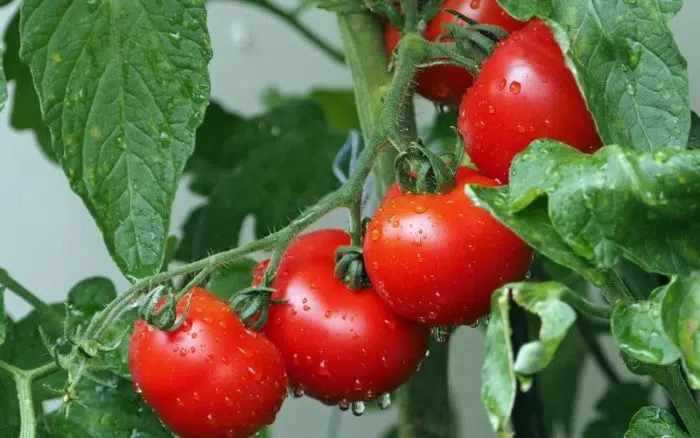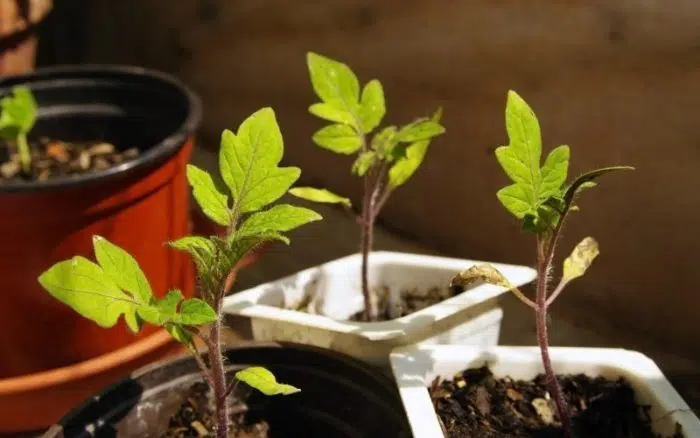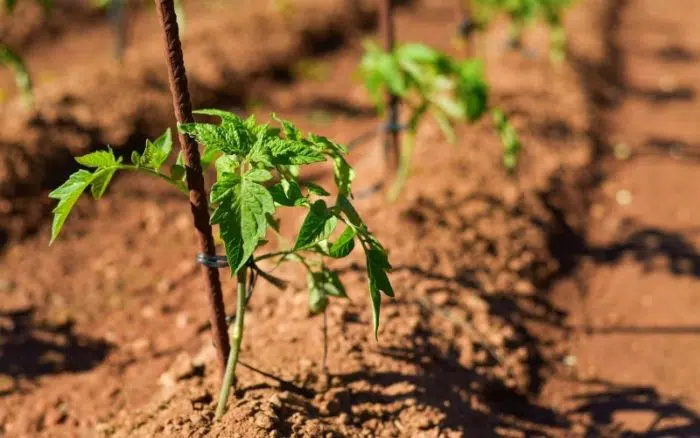It’s hard to beat the flavor of a sun-ripened tomato from your own garden. But if you plant your tomatoes too early, they won’t survive those unexpected early Spring frosts. So when is the best time to plant tomatoes in Oregon?
Air and soil temperature are the name of the game when it comes to growing tomatoes. For tomatoes to grow properly, the soil temperature should reach at least 55 degrees Fahrenheit, but preferably 60 degrees during the day.
You want to be aware of when the last average spring frost happens in your area – this is also called a Hardiness zone. Hardiness zones are essentially a measure of when your growing season starts and ends based on the local climate in your specific location.
While the season for planting tomatoes typically starts around April, this will vary depending on your hardiness zone. Because Oregon is a decent-sized state, ranking 10th overall, there are 6 “zones” within it.

When to Plant Tomatoes in Oregon
The best time to plant tomatoes in Oregon is after the last frost has passed, which should be around April.
Here is a breakdown of some of the bigger regions in Oregon and when to start planting tomatoes based on which area you might live in or closest to.
| Region | Last Frost Date | Start Seeds Indoors | State |
|---|
Now, of course, these dates are estimates. Some years Mother Nature likes to give us an extra month of spring, and the next year she gives us 3 weeks less.
The Farmer’s Almanac has a great tool for checking these dates getting you down to the zip code level of accuracy. You can also use the chart below to get an estimation.
You can test the ground temperature yourself with a soil thermometer too just to make sure.
When to Start Tomato Seeds Indoors
With most tomato varieties, you can start seeds indoors around 6-8 weeks before the last frost date.
When you sow indoors, you’re giving yourself a head start on the growing season.
But you don’t need to be starting all of your tomato plants at the same time either.
Succession planting can help you make sure you always have fresh tomatoes, even enough for a fall harvest. This is a great idea if you’re growing a lot of determinate tomatoes as well.
Let’s dig deeper here (see what I did there?!). Let’s say you start two tomato plants in April, but then two in May, then you can have a successive harvest and instead of harvesting 100 tomatoes at one time, you can break it up into 50 each harvest.

When to Transplant Tomato Seedlings Outside
Whether you’re growing tomatoes from seed or bought some young plants at a garden center, you want to make sure you transplant seedlings outside properly.
Of course, the temperature outside is one of the most important things you can pay attention to. Tomatoes are considered tender vegetables (or fruits if you will), so they can’t handle too much cold weather.
How to Harden Off Tomato Plants
Before planting outdoors, you want to make sure your plants are ready for that completely new environment. Hardening off your tomato plants can help ensure they don’t die of shock within days of transplanting outside.
So how do you harden off your plants? You essentially want to slowly introduce them to the new elements before just replanting them in the ground.
Think about it. Your tomato plants have been growing in the perfect conditions – with the perfect amount of light, practically no wind, not many pests or insects, and no chance of getting sunburn (i.e. sunscald). You need to give them a bit of time to properly transition into their new environment.
This usually takes around 7-10 days to complete, and it can be a very time-consuming process. The idea is that you want to expose your plants to the outside elements a few hours a day, slowly increasing their exposure, until they are used to the outside elements.
This can be a painful process. I grow my plants in my garage grow room, and there are stairs involved. So I have to take these plants down the stairs, leave them outside for a few hours, and bring them back in, back up the stairs.
It’s not fun, but it’s a lot more fun than seeing all of your hard work die in a matter of days.

How to Plant Tomatoes Outside
Once you’ve let your plants get some exposure to the elements via hardening off, it’s time to get those babies in that beautiful Oregon soil!
It can be as simple as digging a hole, putting the plant in the ground, and covering up the roots. But one of the most important things I do is to remove most of the leaves except for the top 4-6 leaves, and then plant them in the ground.
Whatttt…?
You might have noticed those little hairs on the stem of your tomatoes. Well, those “hairs” will actually become roots if you put them in the dirt.
Removing those other leaves allows you to plant them super deep and makes the main stem of the tomato plant so much stronger.
Tomato Spacing
Tomatoes should be planted deeply and evenly spaced about 12 inches apart as they require lots of space for their roots to grow. They need at least 8 hours of sun per day. If you’re growing them in raised beds, you’ll want to leave 12-18 inches of space between plants.
When growing tomatoes in pots, just make sure your pot has a diameter of around 18-24 inches to give the roots enough space to grow.
Caring for Tomato Plants Outside
Tomatoes need full sun and well-drained soil to thrive. Water them regularly, especially during dry spells. Apply a layer of mulch around the plants to help retain moisture and suppress weeds. You can harvest your tomatoes when they are ripe (here is how to tell when a tomato is ripe), typically from late July to early October.
Watering Tomato Plants
Tomato plants need quite a bit of water. On sunny days, I usually try to water tomato plants in the morning, oftentimes every day. But when there are clouds or the temperature drops, they might not need to be watered every day.
Tomato Plants and Sunlight
For best results, tomato plants need 6-8 hours of sunlight a day. Of course, you can’t control the weather, but you can control where you plant them. Make sure you’re not planting your tomatoes behind a wall that only gets 1-2 hours of direct sunlight a day.
Before choosing a place to plant them, watch where the sun hits for a few days beforehand, making sure they will get enough light each day.
Fertilizer for Tomatoes
Most tomatoes are considered heavy feeders, meaning they eat a LOT. You usually want to fertilize your tomato plants when you first plant them, and then wait a while until later in the season. If your plants are showing signs of discolored leaves (purple or yellow), and/or curling up, it could be a fertilizer issue and they might need more phosphorus, nitrogen, and potassium.
- OMRI, OIM, CCOF, NOP Listed Organic
- Non-GMO Verified
- Made in the USA
Growing Tomatoes in Oregon
Growing tomatoes in Oregon can be so rewarding. A tomato sandwich or fresh salad with tomatoes from the garden is unbeatable! Make sure to start seeds indoors around 6 weeks before your last frost date, and transplant them outside when the soil temperature is above 50 degrees Fahrenheit. Happy planting!



